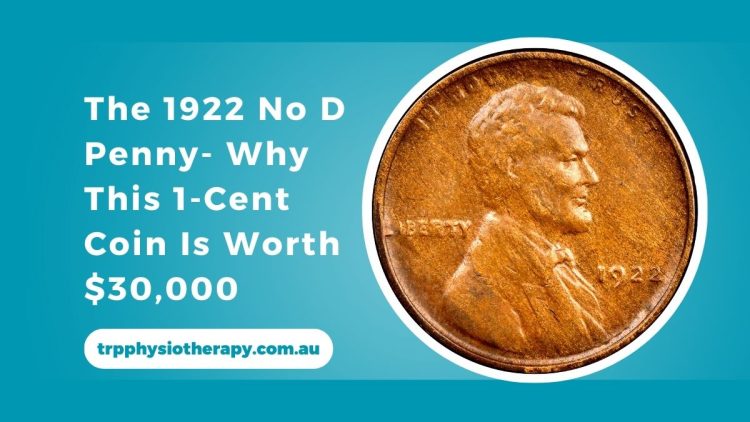The world of coin collecting is filled with fascinating rarities, but few capture the imagination quite like the 1922 No D Lincoln Cent.
This elusive penny, distinguished by its missing mint mark, has become a coveted prize among numismatists, with pristine examples fetching upwards of $30,000 at auction.
Let’s delve into the story behind this remarkable coin, exploring its origins, unique characteristics, and the factors that contribute to its substantial value.
The Genesis of the 1922 No D Penny
In 1922, the Denver Mint was the sole facility producing Lincoln cents, as the Philadelphia and San Francisco Mints did not strike pennies that year. During this period, the Denver Mint faced significant challenges, including a shortage of operational dies and increased demand for coinage.
To meet production quotas, mint workers resorted to reworking and over-polishing existing dies. This intensive polishing inadvertently removed the “D” mint mark from some obverse dies, leading to the creation of the now-famous 1922 No D pennies.
Distinguishing Features of the 1922 No D Penny
Not all 1922 pennies without a visible mint mark are considered equal. The most sought-after variety is the 1922 No D Strong Reverse, characterized by:
- Absence of the “D” Mint Mark: A completely missing mint mark on the obverse.
- Strong Reverse Details: Crisp and well-defined features on the reverse side, indicating the use of a fresh die.
- Sharp Obverse Details: Clear and distinct elements on the obverse, except for the missing mint mark.
Conversely, there are Weak D and Weak Reverse varieties, where the mint mark is faint or partially visible, and the reverse details are less pronounced. These variations are generally less valuable than the Strong Reverse type.
Rarity and Market Value
The scarcity of the 1922 No D penny, particularly the Strong Reverse variety, significantly influences its market value. It’s estimated that only about 15,000 examples of this coin exist today. Collectors place a premium on coins in superior condition, with uncirculated specimens commanding the highest prices.
Here’s a breakdown of approximate values based on condition:
| Grade | Approximate Value |
|---|---|
| Good (G-4) | $650 |
| Very Fine (VF-20) | $750 |
| Extremely Fine (EF-40) | $1,500 |
| About Uncirculated (AU-50) | $3,000 |
| Mint State (MS-60) | $10,000 |
| Mint State (MS-63 Red) | $30,000+ |
Note: Values are approximate and can fluctuate based on market conditions and specific coin attributes.
Factors Influencing Value
Several factors contribute to the value of a 1922 No D penny:
- Condition: Coins with minimal wear and original luster are more desirable.
- Coloration: Red (RD) pennies, indicating original copper color, are valued higher than Red-Brown (RB) or Brown (BN) coins.
- Authentication: Certification by reputable grading services like PCGS or NGC adds credibility and can enhance value.
- Variety: The Strong Reverse variety is more valuable than Weak D or Weak Reverse types.
Authentication and Grading
Given the high value of the 1922 No D penny, authentication is crucial. Professional grading services assess the coin’s authenticity and condition, providing a grade that significantly impacts its market value. Collectors should seek coins graded by established organizations to ensure legitimacy.
The 1922 No D Lincoln Cent stands as a testament to the intriguing anomalies that can occur in coin production. Its accidental creation, combined with its rarity and distinctive features, has cemented its status as a prized possession among collectors.
Whether you’re a seasoned numismatist or a curious enthusiast, discovering one of these pennies is akin to unearthing a hidden treasure—a small piece of history with a substantial story and value.
FAQs
How can I tell if my 1922 penny is a No D variety?
A genuine 1922 No D penny will lack the “D” mint mark below the date on the obverse. The most valuable Strong Reverse variety also features sharp and well-defined details on the reverse side.
Are all 1922 No D pennies valuable?
While all 1922 No D pennies have some value, the Strong Reverse variety commands the highest prices. Weak D and Weak Reverse varieties are less valuable but still sought after by collectors.
Where can I sell a 1922 No D penny?
You can sell your coin through reputable coin dealers, auction houses, or online platforms specializing in numismatics. Ensure your coin is authenticated and graded to maximize its value.
How many 1922 No D pennies exist today?
It’s estimated that approximately 15,000 examples of the 1922 No D penny survive, making it a rare find for collectors.

